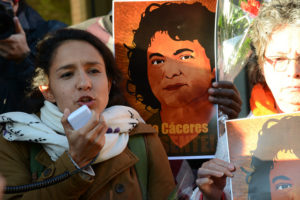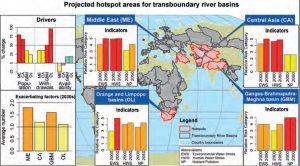Pedro Pablo Kuczynski will become Peru’s 95th president on 28 July after defeating Keiko Fujimori by 50.1%-49.9% in the closest electoral contest in the country’s history. Fewer than 40,000 votes separate Kuczynski from Fujimori out of some 17.1m ballots cast. Fujimori has refused to concede defeat until all votes are in but with the count standing at 99.9% Kuczynski should be proclaimed president by the weekend.
Kuczynski inherits an economy which, while not firing on all cylinders, has been growing for 82 consecutive months. His challenge will be political. He will need to govern with a political aptitude not always apparent during his electoral campaign as Fujimori’s populist right-wing Fuerza Popular (FP) will have a two-thirds majority in congress.
On paper Kuczynski shares many policy positions with FP but he is beholden to leftist voters who won him the election and will face social protests if he forgets that fact. Fujimori won in 14 of Peru’s 25 electoral districts. She excelled in the north, winning convincingly in Piura and La Libertad, Peru’s second- and third-largest regions, with 61% of the vote. Despite these defeats, Kuczynski tripled his support here compared to the first round, jumping from the low teens to a creditable 39% of the vote, whereas Fujimori did not add too much additional support in the two regions having won them decisively in the first round.
Kuczynski also won in the northernmost region of Loreto and only narrowly lost in Ancash. The 11 electoral districts won by Kuczynski included Lima (where more than one-third of the electorate is concentrated), albeit by a very small margin, and emphatic wins in the three populous southern regions of Puno, Cusco and Arequipa. Kuczynski averaged 65.5% across these three regions.
He also recorded massive wins in the smaller southern regions of Tacna and Moquegua. It is here where he really benefitted from the anti-Fujimori vote and the rallying call just a week before the second-round showdown made by the left-wing presidential candidate, Verónika Mendoza, who he edged out in April’s first round. Mendoza also won Kuczynski precious votes in the southern regions of Ayacucho, Huancavelica and Apurímac. Kuczynski narrowly lost in Ayacucho but he won in the other two regions despite averaging a paltry 7.7% of the vote across the three in the first round. This was thanks to Mendoza, who averaged just over 50% in the three regions in the first round.
Kuczynski also won the fourth largest region of Cajamarca by a whisker. Cajamarca, which borders Ecuador, is the stronghold of the radical left-wing firebrand Gregorio Santos, the imprisoned former governor of the region. Kuczynski had taken just 11% of the vote here in the first round.
| Keiko Fujimori | Pedro Pablo Kuczynski | |
| 2nd rnd (1st rnd) | 2nd rnd (1st rnd) | |
| Lima | 49.9 (40.5) | 50.1 (29.9) |
| Piura | 61.0 (56.4) | 39.0 (13.1) |
| La Libertad | 61.0 (48.9) | 39.0 (14.5) |
| Cajamarca | 49.9 (32.3) | 50.1 (11.3) |
| Puno | 36.9 (22.7) | 63.1 (8.8) |
| Junín | 51.0 (41.2) | 49.0 (23.2) |
| Cusco | 34.2 (20.9) | 65.8 (10.3) |
| Arequipa | 32.4 (23.9) | 67.6 (27.4) |
| Lambayeque | 58.8 (50.2) | 41.2 (16.3) |
| Ancash | 51.1 (42.9) | 48.9 (16.0) |
| Loreto | 46.1 (36.1) | 53.9 (27.5) |
| Callao | 50.03 (40.4) | 49.97 (28.1) |
| Huánuco | 51.0 (39.5) | 49.0 (14.4) |
| San Martín | 55.8 (49.0) | 44.2 (12.8) |
| Ica | 52.8 (44.7) | 47.2 (15.9) |
| Ayacucho | 51.5 (31.6) | 48.5 (6.9) |
| Huancavelica | 43.0 (26.6) | 57.0 (10.4) |
| Ucayali | 60.3 (52.8) | 39.7 (15.3) |
| Apurimac | 47.9 (31.2) | 52.1 (5.7) |
| Amazonas | 52.5 (43.8) | 47.5 (12.2) |
| Tacna | 31.2 (21.0) | 68.8 (15.7) |
| Pasco | 49.999 (35.3) | 50.001 (26.1) |
| Tumbes | 70.6 (64.6) | 29.4 (12.1) |
| Moquegua | 32.1 (24.3) | 67.9 (28.0) |
| Madre de Dios | 63.8 (44.4) | 36.3 (9.5) |
Mendoza was quick to remind Kuczynski of the debt he owes the Left for his victory. She rode to his rescue at the eleventh hour by getting out the leftist vote in the southern regions where she won comfortably in the first round, and poorer neighbourhoods in Lima, persuading undecided or uninspired voters to back him in order to prevent Peru returning to an authoritarian past under Fujimori.
“We wanted to block the path to drug-trafficking and violence,” Mendoza said. “This was not support for [Kuczynski’s] political platform which differs enormously from what we want for the country.”
Even with all of this borrowed support, however, it was a very close run thing, perhaps best exemplified by the result in the central region of Pasco where Kuczynski won by a mere three votes in 128,577 cast.
Despite the appearance of geographical and political polarisation, and the closeness of the count, there were no violent clashes between rival supporters and both candidates awaited the announcement of the final result by the electoral authorities (Onpe) with remarkable calm.
After initially stressing the need to be “vigilant so that they don’t steal any votes from us,” Kuczynski said he would wait until the bitter end before claiming victory (and Fujimori before acknowledging defeat). The Onpe would customarily be in a position to declare the final result much earlier but because so little separated the two candidates it became necessary to wait for ballot boxes to be brought in to computing centres from remote jungle areas by foot and canoe.
As Kuczynski’s lead was steadily eroded, attention switched to the large expatriate vote (3.8% of the total electorate), which began to look decisive. When this came in it proved to be almost as close as the national vote. Kuczynski won by 50.7-49.3% out of 327,000 votes cast abroad (a difference of just under 5,000).
Fujimori won by three percentage points in the US, which made up around 70% of the expatriate vote, but Kuczynski was the clear winner in Europe (58%-42%). With Kuczynski’s lead still (just) intact, the head of the Onpe, Mariano Cucho, announced that the vote from the main coca-producing region of the Apurímac, Ene and Mantaro rivers valley (Vraem), where Mendoza, crucially, won in the first round, had still not been counted.
It seemed like a final confirmation of the pivotal role Mendoza played for Kuczynski in the run-off. With her job done, Mendoza promptly announced that her leftist Frente Amplio (FA) party would provide opposition to the incoming Kuczynski administration in congress.
The FA was never going to be a natural ally for Kuczynski, and lacks sufficient power anyway, having won only 20 seats in the 130-seat congress last April. Instead, he will need to work with Fujimori’s FP, with which he has far more in common, especially economically. But this runs the risk of enraging the many leftist voters, and anti-Fujimoristas, who enabled Kuczynski to win, and he is likely to face social protests unless he meets some of their demands.
“We abhor dictatorship and love dialogue; we are going to talk to everyone,” Kuczynski said, which is just as well as ‘dialogue’ is where he will clearly have to excel. Kuczynski’s Peruanos por el Kambio (PPK) will have only 18 seats in congress. FP will have 73 seats. Unlike most of Peru’s political parties, FP has tended to show considerable unity and cohesion.
After a second straight narrow defeat for Fujimori, however, the party could succumb to some infighting.
The local media was swift to point out that Kenji Fujimori had not gone to the voting centre to vote for his sister. Kenji, who was elected with more votes than any other congressional deputy for the second straight time last April, has not commented on his decision, which appears to confirm how strained familial relations have become.
After the first round Keiko said that “in 2021 there will be no candidate with the surname Fujimori,” in an effort to assuage the concerns of voters fearful of a return of an authoritarian Fujimorismo dynasty, only to be openly contradicted by Kenji, who said that if she failed to win, he would stand in 2021.
New government
The uncertainty surrounding the final result means that there has been no discussion as yet about who might feature in Kuczynski’s cabinet but this will be a tough balancing act.
Naturally inclined towards technocrats, Kuczynski will know that while these would appeal to the private sector, which will support his government, too many of them could play badly to the Left which brought him victory. Having participated in both Acción Popular and Perú Posible governments, Kuczynski will not just appoint ministers from the ranks of PPK, but what is clear is that he will need to choose a prime minister capable of straddling Peru’s political divide. Fuerza Popular deputy Luisa María Cuculiza savaged Kenji Fujimori’s decision not to vote for his sister on 5 June.
“I don’t know what his motive was but for me it was outrageous, a total error. I would have gone even if I were confined to a wheelchair,” Cuculiza said. Pedro Pablo Kuczynski’s transition team will be comprised of his first and second vice-presidential running mates, Martín Vizcarra and Mercedes Araóz, his chief economic adviser (and future economy minister) Alfredo Thorne, Gino Costa, a former interior minister (2002-2003) and Fiorella Molinelli, his adviser on modernisation of the state.
This article was orignally published by Latin News


![Tubewell spouting water. Excessive use of groundwater for agriculture is creating a crisis [image by Shahzada Irfan]](https://dialogue.earth/content/uploads/2016/06/Tubewell-300x225.jpg)



